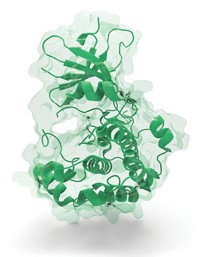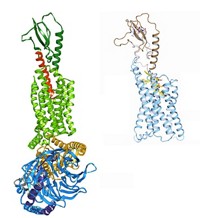Advertisement
Grab your lab coat. Let's get started
Welcome!
Welcome!
Create an account below to get 6 C&EN articles per month, receive newsletters and more - all free.
It seems this is your first time logging in online. Please enter the following information to continue.
As an ACS member you automatically get access to this site. All we need is few more details to create your reading experience.
Not you? Sign in with a different account.
Not you? Sign in with a different account.
ERROR 1
ERROR 1
ERROR 2
ERROR 2
ERROR 2
ERROR 2
ERROR 2
Password and Confirm password must match.
If you have an ACS member number, please enter it here so we can link this account to your membership. (optional)
ERROR 2
ACS values your privacy. By submitting your information, you are gaining access to C&EN and subscribing to our weekly newsletter. We use the information you provide to make your reading experience better, and we will never sell your data to third party members.
ACS Meeting News
Small molecule fragments can bind a target differently depending on temperature
Screening the binding at room temperature could offer new information for designing drugs
by Gina Vitale
August 22, 2022

Many drugs consist of small molecules that bind to protein targets and modulate their activity. To design such drugs, researchers often rely on crystal structures based on X-ray diffraction data that show how fragments of these small molecules bind to their targets. These data are obtained at cryogenic temperatures, which help keep the proteins stable and protect them from X-ray radiation, but they are a far cry from human body temperature, at which proteins and drug molecules actually interact. A new crystallographic screen shows that at room temperature, some small molecule fragments can bind in different poses or to different sites of a target protein altogether.
Using X-ray crystallography, scientists at the City University of New York (CUNY) screened more than 100 small molecule fragments for their ability to bind at room temperature to a common therapeutic target, protein tyrosine phosphatase 1B (PTP1B), which is implicated in diseases like diabetes and breast cancer. The researchers found that about half of the fragments that bound to PTP1B did so in “a different or interesting sort of way” compared with at cryogenic temperatures, said graduate student Tamar Skaist, a graduate student in biochemist Daniel Keedy’s lab at the CUNY Advanced Science Research Center. The team also observed binding in allosteric sites, regions of a protein outside the active site that can play a role in the protein’s activity. “We could use this information to not only design regular drugs but perhaps more specifically [an] allosteric drug: a drug that can bind in one site of the protein and modulate activity in a different site of the protein,” she said. Skaist presented the work on Sunday at the ACS Fall 2022 meeting in a talk in the Division of Medicinal Chemistry.
The data suggest that cryogenic screens may yield an incomplete picture for designing drugs, and that room-temperature screens may reveal new druggable binding sites for regulating the function of enzymes like PTP1B. “When you’re doing things like drug design, these very small changes in binding or binding poses can lead to very large differences in how well the ligand binds and if it’s actually affecting the protein,” Skaist said.
Marcus Fischer, a chemical biologist at St. Jude Children’s Research Hospital who was not involved with the work, says that part of this data set’s significance is in its scale. He has seen similar results in his own recent work, but with a smaller sample size. It’s also exciting for the PTP1B field that this approach has revealed new sites on the protein where drugs can potentially control its function allosterically, he said.
Room temperature crystallography is gaining ground, Fischer said. “It’s becoming more popular . . . because there’s really some pretty cool insights that you can gain from these structures that is completely different from the cryo equivalent,” he says.
UPDATE:
This story was updated on Sept. 14, 2022, to clarify Tamar Skaist's affiliation. Skaist is a graduate student in biochemist Daniel Keedy’s lab at the City University of New York Advanced Science Research Center.
This story was updated on Aug. 23, 2022, to include the day of the talk at the ACS Fall 2022 meeting. The talk took place on Sunday.
Advertisement
rrrrrrrrrrrrrrrrrrrrrrrrrrrrrrrrrrrrrr





Join the conversation
Contact the reporter
Submit a Letter to the Editor for publication
Engage with us on Twitter